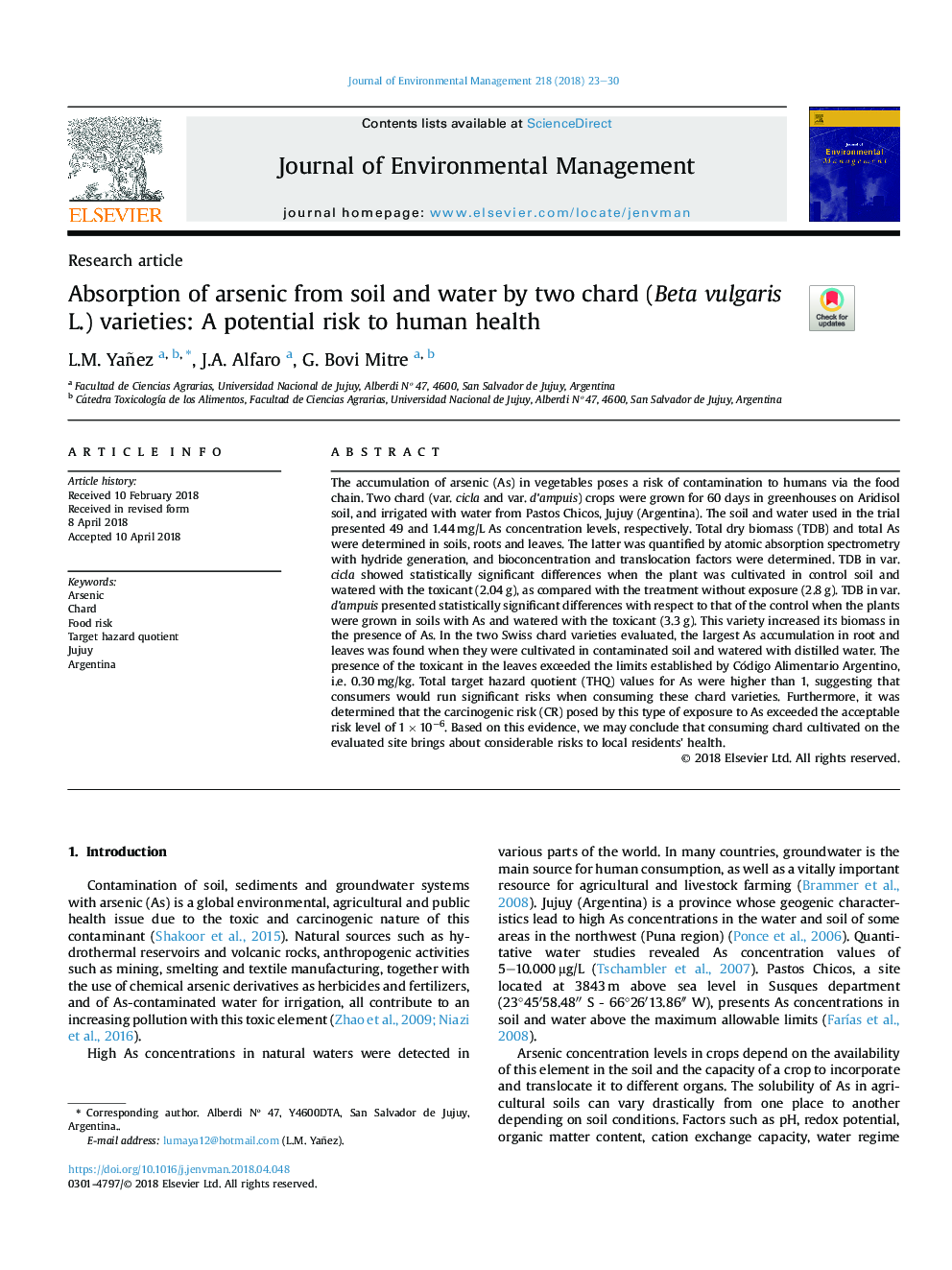| Article ID | Journal | Published Year | Pages | File Type |
|---|---|---|---|---|
| 7476802 | Journal of Environmental Management | 2018 | 8 Pages |
Abstract
The accumulation of arsenic (As) in vegetables poses a risk of contamination to humans via the food chain. Two chard (var. cicla and var. d'ampuis) crops were grown for 60 days in greenhouses on Aridisol soil, and irrigated with water from Pastos Chicos, Jujuy (Argentina). The soil and water used in the trial presented 49 and 1.44â¯mg/L As concentration levels, respectively. Total dry biomass (TDB) and total As were determined in soils, roots and leaves. The latter was quantified by atomic absorption spectrometry with hydride generation, and bioconcentration and translocation factors were determined. TDB in var. cicla showed statistically significant differences when the plant was cultivated in control soil and watered with the toxicant (2.04â¯g), as compared with the treatment without exposure (2.8â¯g). TDB in var. d'ampuis presented statistically significant differences with respect to that of the control when the plants were grown in soils with As and watered with the toxicant (3.3â¯g). This variety increased its biomass in the presence of As. In the two Swiss chard varieties evaluated, the largest As accumulation in root and leaves was found when they were cultivated in contaminated soil and watered with distilled water. The presence of the toxicant in the leaves exceeded the limits established by Código Alimentario Argentino, i.e. 0.30â¯mg/kg. Total target hazard quotient (THQ) values for As were higher than 1, suggesting that consumers would run significant risks when consuming these chard varieties. Furthermore, it was determined that the carcinogenic risk (CR) posed by this type of exposure to As exceeded the acceptable risk level of 1â¯Ãâ¯10â6. Based on this evidence, we may conclude that consuming chard cultivated on the evaluated site brings about considerable risks to local residents' health.
Related Topics
Physical Sciences and Engineering
Energy
Renewable Energy, Sustainability and the Environment
Authors
L.M. Yañez, J.A. Alfaro, G. Bovi Mitre,
